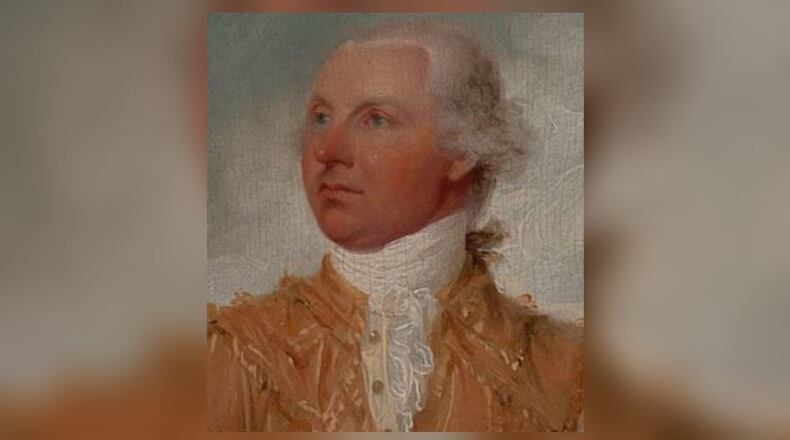Here are seven things you should know about Butler County’s namesake, Gen. Richard Butler, according to the late Butler County historian Jim Blount, Ohio historians, and other sources:
READ MORE: Here’s what you didn’t know about the state’s formative moments in Butler County
1. Butler was an Irishman. He was born April 1, 1743, in Dublin. His family later moved to Lancaster, Pa.
2. He was a soldier in America for two nations. There was the British, as an ensign in the Bouquet Expedition during 1764 involving relations with Native Americans, and later as an enlistee in the revolutionary army, and the Indian wars on the western frontier, including Ohio, that followed. He also was a frontiersman in between.
For those interested in learning more about the Ohio area before there was a state, the Native Americans in the Miami Valley exhibit can be viewed at 327 N. Second St. in Hamilton. Hours are Tuesdays, Thursdays and Fridays from 10 a.m. to 3 p.m.; and Saturdays from 9 a.m. to 2 p.m. The phone number is 513-896-9930.
3. He signed treaties with Indian tribes. As an Indian commissioner and later superintendent of Indian Affairs for the northern frontier, Butler signed treaties with the Iroquois, Wyandot, Delaware, Chippewa, Ottawa and Shawnee tribes in 1784 through 1786.
4. His death came on an unadvised mission. Butler and Scotland native Gen. Arthur St. Clair, to whom Butler reported during campaigns against Native Americans, frequently disagreed, with St. Clair sending them to fight before Butler felt they were ready. Some have blamed that disconnect for the disastrous defeat and Butler's death. The troops he led were hastily assembled, poorly trained, ill equipped, uninformed about the enemy, and short on ammunition and food.
5. Butler wasn't selfish. After he was mortally wounded in battle on Nov. 4, 1791, in a battle known as St. Clair's Defeat, the worst-ever army battle against the Indians, and his brother, Major Thomas Butler, was also badly injured, Gen. Butler ordered a third brother, Captain Edward Butler, to save Thomas Butler instead of him.
6. By some accounts, Butler was the most senior U.S. officer killed in combat. That probably was because the tribes could easily tell the U.S. leaders from regular troops by their uniforms and concentrated their gunfire on them.
7. Namesake of others. Numerous places and things are named for Butler, aside from this county. Among them are Butler County in Pennsylvania and the city of Butler, Pa.
READ MORE: chool life through the years in Butler County, seen in black-and-white archive photos
About the Author
